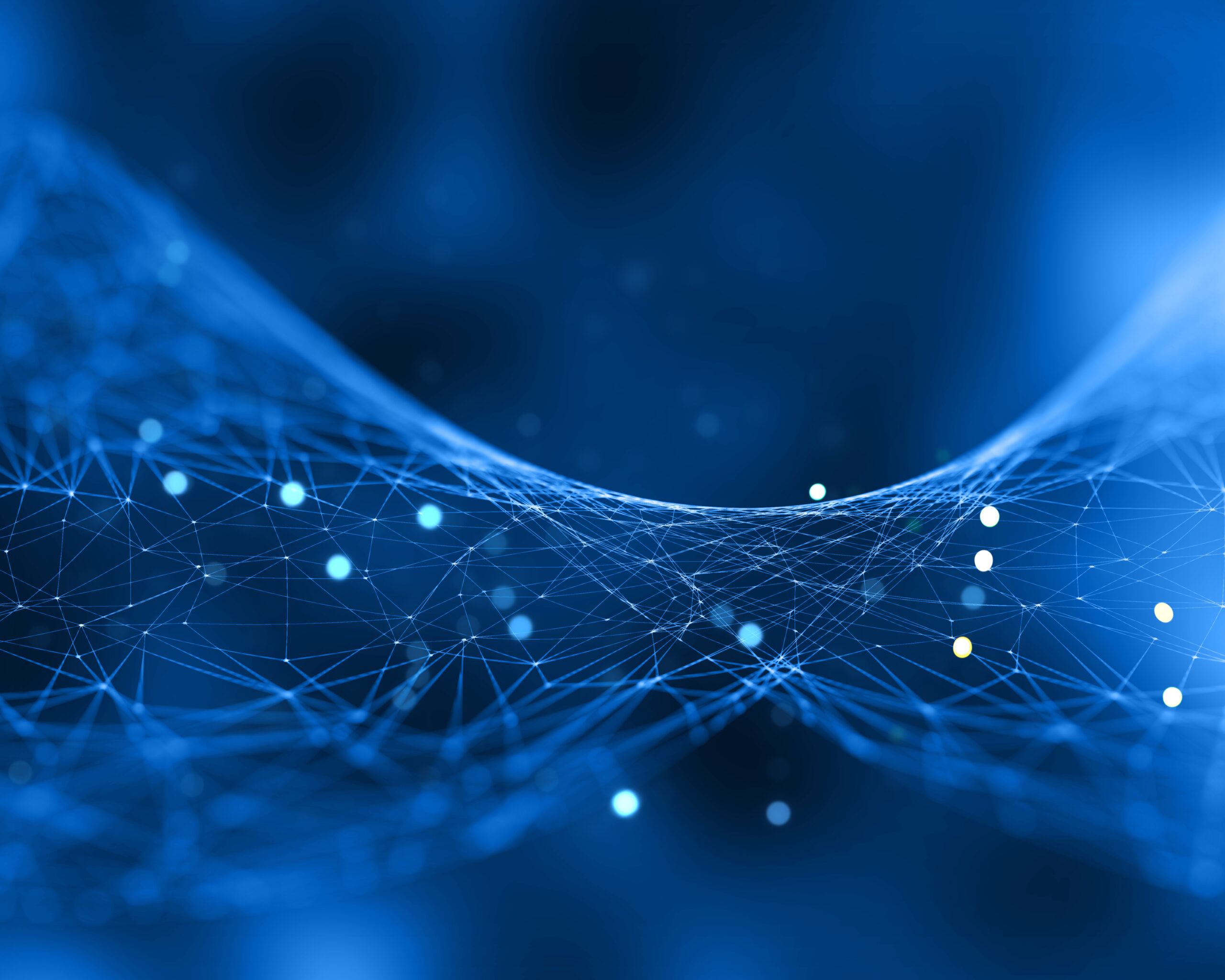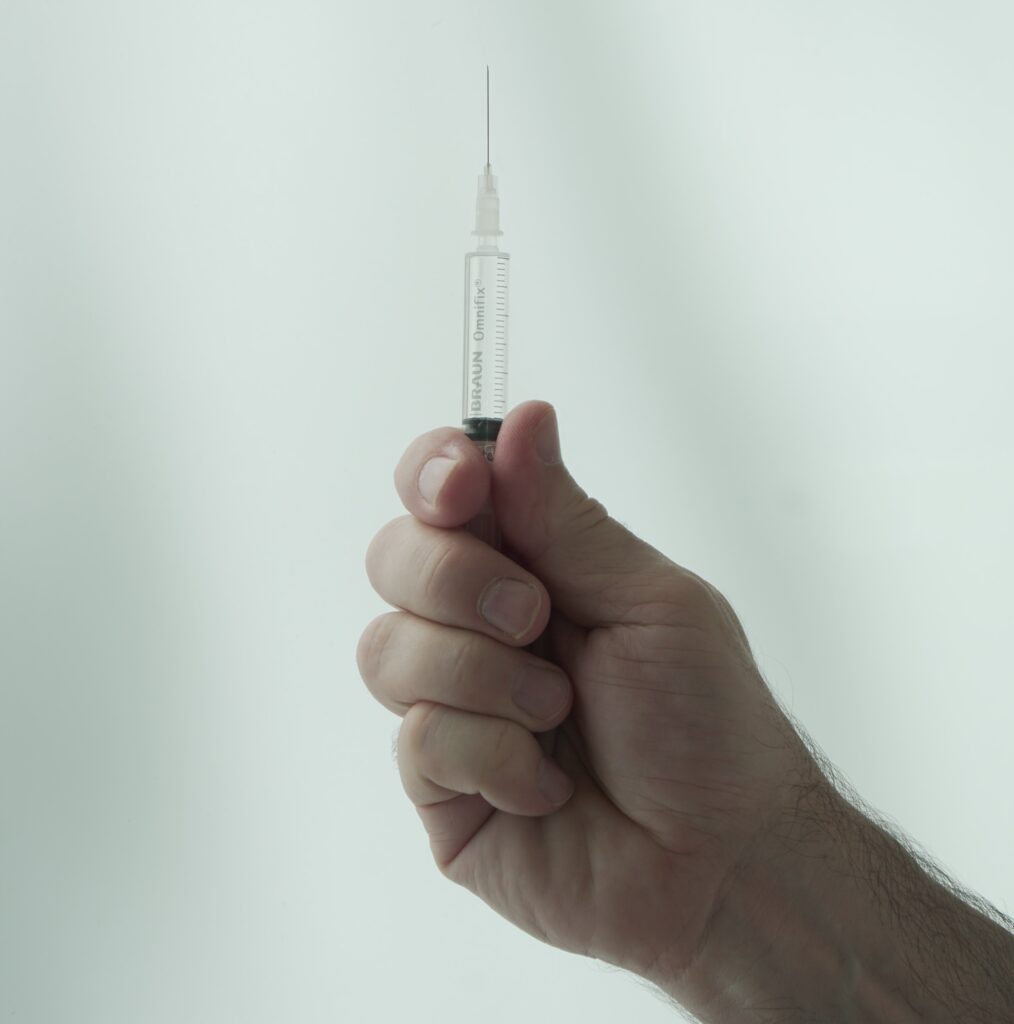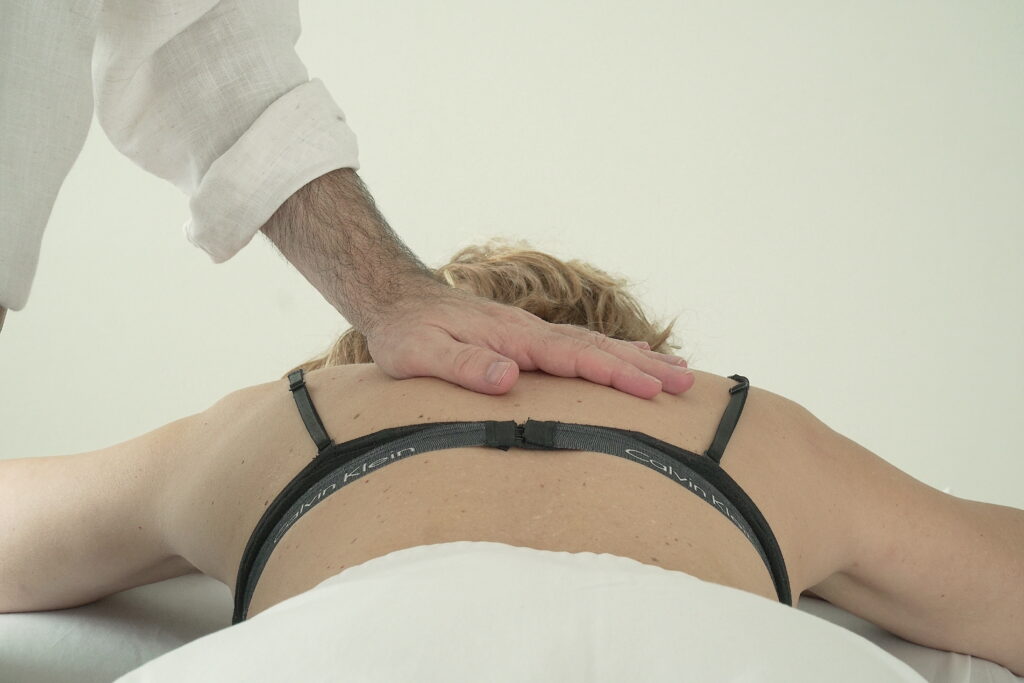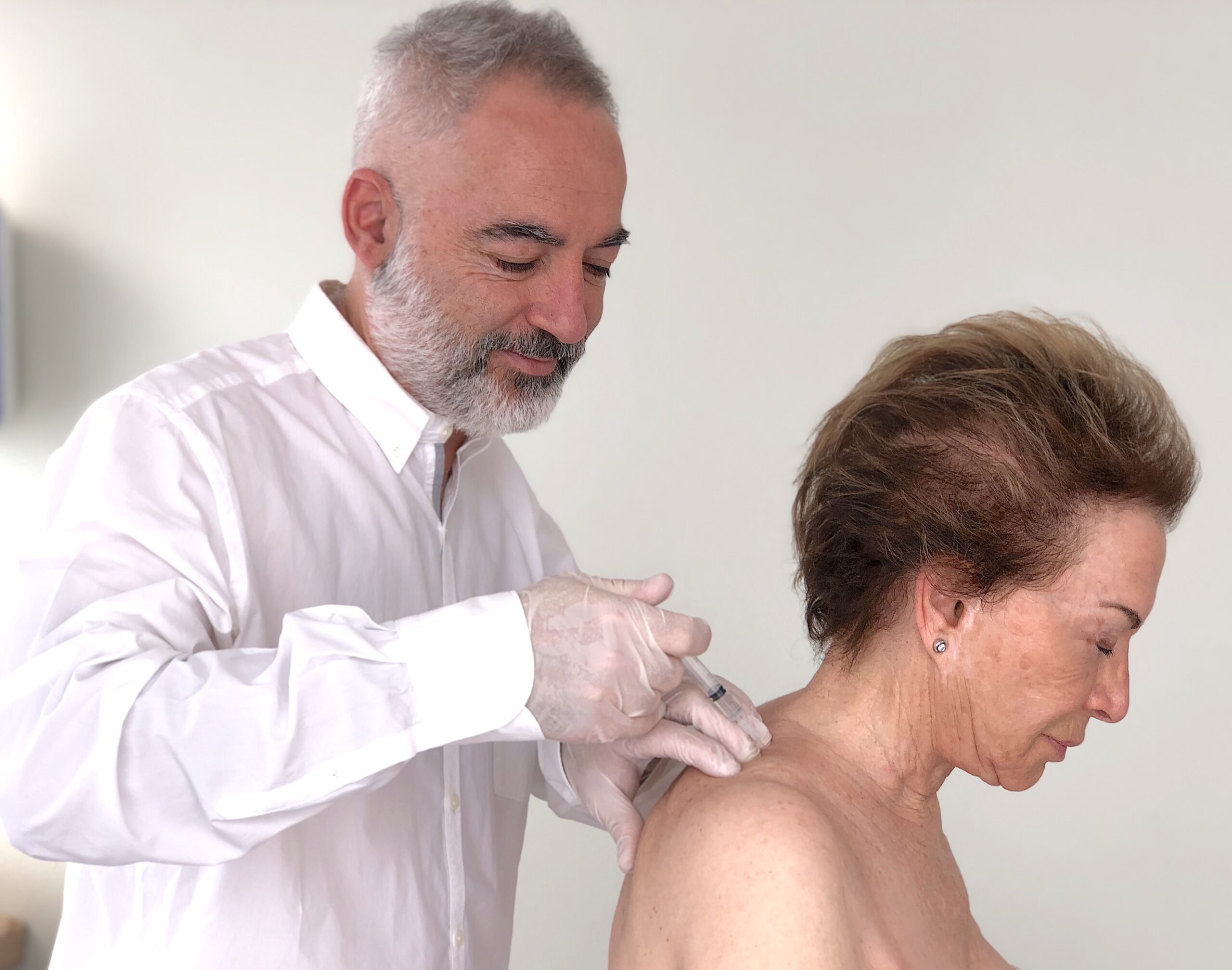Neural Therapy
Its benefits and how it works

What is Neural Therapy?
The Neural Therapy is a medical procedure consisting of injections of small quantities of a local anesthetic in low concentrations in certain points and/or nerve centers, especially in their autonomic or vegetative part, with the aim of facilitating the regulatory capacity of the organism’s functions and thus exerting a general effect on the individual.
It also implies a way of relating to the person and treating him/her, from an integrative perspective of his/her life history, relating the different parts of the body to each other and to the mental, emotional, emotional and social dimensions of the person.
“The wise use of the vegetative nervous system will one day constitute the principal part of the medical art.”
Ewald K. Hering – German physiologist.
When did research with neural therapy begin?

Many physicians and surgeons have been investigating the potential diagnostic and therapeutic uses of local anesthetics since the late 19th century.
The use of local anesthetics for therapeutic purposes can be traced back to its very origin, when in 1884 Sigmund Freud and Carl Koller were looking for a treatment to calm a patient’s trigeminal neuralgia for a prolonged period of time.
Since then, many physicians and surgeons in the early 20th century have investigated its diagnostic and therapeutic potential, especially since the German chemist Alfred Einhorn synthesized procaine for the first time in 1904 (marketed under the name Novocaine®).
At that time, immersed in the study of the nervous system with authors such as Pavlov, Bykov and Ramón y Cajal, among others, many publications appeared referring to the therapeutic effect of local anesthetic injections.
In 1940, they discovered the pathological effects at a distance that can be produced by foci of irritation, which they called interfering fieldsand how these could be neutralized by injecting the local anesthetic directly into the irritated area of the nervous system, immediately eliminating the distant effects that it was causing (they called it effect in seconds).
Since then, this therapy has been applied in a wide variety of pathologies, acute and chronic, not only in cases of pain.
The research in the last decades in the field of the neurosciencehave discovered the molecular pathways by which the nervous system acts as a bridge between the mental, emotional and physical spheres of the person, so that every emotion ends up being projected in the body, in large part, through the autonomic nervous system.
This is one of the principles by which in medicine we cannot say that one part of the body has no relationship with another. The nervous system reminds us that we must always make a complete assessment of the personWe cannot evaluate the symptoms in an isolated way or treat the patient piecemeal.
By Therefore, we can assume that any irritation, whether mechanical (such as trauma or injury), toxic (such as infection), thermal (such as a burn), chemical (such as a drug), or emotional (such as stress), that alters the properties of a part of the autonomic nervous system, may involve an alteration in the regulation of the tissues it controls, impact its function and also affect the entire system, facilitating or triggering disease, especially where there is a predisposition.
There are quite a few experiments The first local anesthetics were synthesized, in which it was observed and proven both in humans and animals that local anesthetics used at low concentrations could neutralize irritations of the nerve fibers, returning them to their physiological functionality.
Discoveries

Every emotion ends up being projected onto the body. We realize it when we feel a lump in our throat in a situation we live in fear, or a heaviness in our chest or heartburn in our stomach when we feel anxious.

Knows the
"History of Our Foundation"
The NTRF began to walk in 2019 by the hand of Dr. David Vinyes who, after applying daily neural therapy in his patients for 26 years, decided to promote this Foundation based in Sabadell (Barcelona). Learn more about our history.
Frequently Asked Questions
The most frequent reasons for consultation are those related to acute or chronic pain (cervical, lumbar, joint, muscular, fibromyalgia, migraine, neuralgia, etc.), post-surgical processes (edema, pain, functionality, etc.), recurrent infections (pharyngitis, tonsillitis, cystitis, prostatitis, etc.), allergic conditions (rhinitis, etc.) and anxiety.
Neural therapy is a very successful, fast and very economical way of treatment, with high reliability and very low iatrogenicity.
According to Lorenz Fischer, repeated injections of local anesthetic can lead to the extinction of pathological irritation stored in the sympathetic nervous system and to the restoration of physiological tissue perfusion.
Case reports published by several authors suggest that interfering fields (such as scars) and their distant adverse effects can be temporarily or permanently eliminated by injecting local anesthetic in their vicinity.
It is not necessary to withdraw any treatment to perform neural therapy. Precisely the mechanism of action of neural therapy, which facilitates the recovery of the body’s self-regulating functions, means that it can be applied at the same time as other therapies, whether pharmacological, surgical, manual, naturopathic, energetic, etcetera.
And not only is it compatible with other therapies, but it can also increase their efficacy, due to its capacity to improve blood perfusion of the tissues, decrease sympathetic tone and increase vagal tone, among others.
If the procaine used is free of preservatives, adverse reactions are exceptional.
Mild reactions such as bruising or swelling at the points of application, slight dizziness, great relaxation, or even emotional release in the form of crying or laughter may occur.
The recovery of the ANS regulatory pathways may generate reactions and symptoms that may appear to be adverse effects, such as fever, exhaustion, muscle aches, etc., but these symptoms usually self-limit within one or two days and without consequences.
Interesting publications for Neural Therapy
Stellate ganglion block with procaine in breast cancer survivors with hot flashes and sleep disturbances undergoing Endocrine Therapy. Soecknick, Sven, 2024
Improvement in post-orthodontic chronic musculoskeletal pain after local anesthetic injections in the trigeminal area: a case series. David Vinyes, Paula Hermosilla Traverso, Julia Hartley Murillo, Maider Sánchez Padilla, Montserrat Muñoz-Sellart, 2023
Therapeutic Use of Low-Dose Local Anesthetics in Pain, Inflammation, and Other Clinical Conditions: A Systematic Scoping Review. David Vinyes Montserrat Muñoz-Sellart, Lorenz Fischer, 2023
A case of severe trigeminal neuralgia: recovery by means of stellate ganglion block with procaine. Discussion of possible mechanisms of action. Lopes CA, Fischer L, 2023
The potential role of trigeminal nerve irritation in the pathophysiology of Bell’s palsy. A case report from a Neural Therapy perspective. Kawano-Hokama M, Shiratori-Tusita LN, Pinilla-Bonilla L, Cruz-Rodríguez Y, 2023
An Approach to Acute SARS-CoV-2 Management with Complementary Neuraltherapeutic Medicine: A Case Report. Bustamante C, Pinilla L, Amaris O. 2023
Local anesthetics as a therapeutic tool for post COVID-19 patients: A case report. Vinyes D, Muñoz-Sellart M, Garcia-Caballero T. 2022.
Stellate ganglion block reduces symptoms of Long COVID: A case series. Liu LD, Duricka DL. 2022
The Influence of Modern Neurophysiology on the Previous Definitions of “Segment” and “Interference Field” in Neural Therapy. Engel R, Barop H, Giebel J, Ludin SM, Fischer L. 2022.
Regulation of acute reflectory hyperinframmation in viral and other diseases by means of stellate ganglion block. A conceptual view with a focus on Covid-19. Fischer L, Barop H, Ludin SM, Schaible HG. 2021.
Treatment of Localized Vulvar Pain with Neural Therapy: A Case Series and Literature Review. Rey M; Muñoz-Sellart M; Catalán M; Vinyes D. 2021.
Improving the Quality of Life of Patients with Headache Treated with Neural Therapy. Nassar AC, Geney MC, Martínez-Pacheco FH, Muñoz-Sellart M, Vinyes D. 2021.
Procaine-The Controversial Geroprotector Candidate: New Insights Regarding Its Molecular and Cellular Effects. Gradinaru D, Ungurianu A, Margina D, Moreno-Villanueva M, Bürkle A. 2021.
Evaluation of the effects of neural therapy in patients diagnosed with fibromyalgia. Altınbilek T, Terzi R, Başaran A, Tolu S, Küçüksaraç S. 2018.
Emotional release and physical symptom improvement: a qualitative analysis of self-reported outcomes and mechanisms in patients treated with neural therapy. Haller H, Saha FJ, Ebner B, Kowoll A, Anheyer D, Dobos G, Berger B, Choi KE. 2018.
Comparision of the efficacy of neural therapy versus steroid injection in the treatment of lateral epicondylitis (tennis elbow). Yilmaz E. 2018.
Evaluation of neural therapy effect in patients with piriformis syndrome. Nazlıkul H, Ural FG, Öztürk GT, Tanay Öztürk AD. 2018.
Severe Case of Chronic Pelvic Pain Syndrome: Recovery after Injection of Procaine into the Vesicoprostatic Plexus-Case Report and Discussion of Pathophysiology and Mechanisms of Action. Kronenberg RM, Ludin SM, Fischer L. 2018.
Bilateral sphenopalatine ganglion block reduces blood pressure in never treated patients with essential hypertension. A randomized controlled single-blinded study. Triantafyllidi H, Arvaniti C, Schoinas A, Benas D, Vlachos S, Palaiodimos L, George Pavlidis, Ikonomidis I, Batistaki C, Voumvourakis C, Lekakis J. 2018.
Effects of neural therapy on quality of life in patients suffering from Raynaud syndrome. Molnár I, Szőke H, Hegyi G. 2018.
Efficacy and safety of stellate ganglion block in chronic ulcerative colitis. Lipov E, Candido K. 2017.
Eficacia de la terapia neural en pacientes con dolor cervical o lumbar, del servicio de medicina física y rehabilitación de un centro hospitalario. Villamizar Olarte DM, Rojas de Rangel D. 2016.
Efficacy of local lidocaine application on anxiety and depression and its curative effect on patients with chronic tension-type headache. Karadaş O, Inan LE, Ulaş UH, Odabaşi Z. 2016.
Long-term results of therapeutic local anesthesia (neural therapy) in 280 referred refractory chronic pain patients. Egli S, Pfister M, Ludin SM, Puente de la Vega K, Busato A, Fischer L. 2015.
Estudio de intervención sobre el dolor subagudo y crónico en atención primaria: una aproximación a la efectividad de la terapia neural. Lóriz O, Raya A, Pérez-MoralesD, Girona A, Vinyes D, Puente de la Vega K. 2011.
Randomized trial of trigger point injection for renal colic. Iguchi M, Katoh Y, Koike H, Hayashi T, Nakamura M. 2002.



